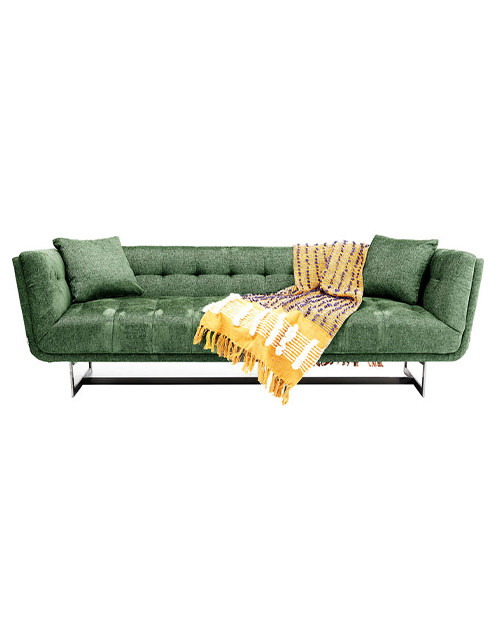
Material: Frame: Steel brushed, Cover: 58 % Viscose, 42 % Polyester, Seat upholstery: 30 Polyester, Back upholstery: 28 Polyester, 220 kg Max. load-carrying capacity, Hand-crafted, Dry cleaning, Delivery Assembled, 46 cm Seat height, 25000 Martindale
Measures (H/W/D): 75 x 224 x 84.5 centimeters
Weight: 40 kg
read more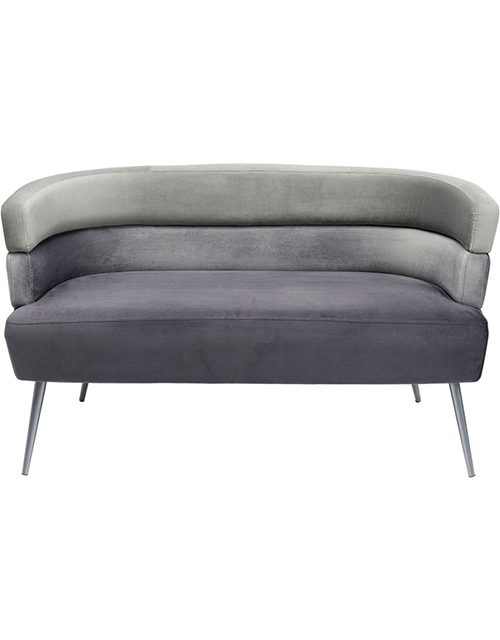
Material: Upholstery: 28 kg/m³ Polyurethane, Seat: Chipboard Natural/untreated, Cover: Polyester (velvet look), Foot/Base: Steel lacquered, Foot/Base: Delivery Knocked-down, 180 kg Max. load-carrying capacity, Hand-crafted, 43,50 Seat height, Maintenance and Cleaning: Art. No. 25002 Furniture Cleaner
Measures (H/W/D): 64 x 125 x 64 centimeters
Weight: 15.2 kg
read more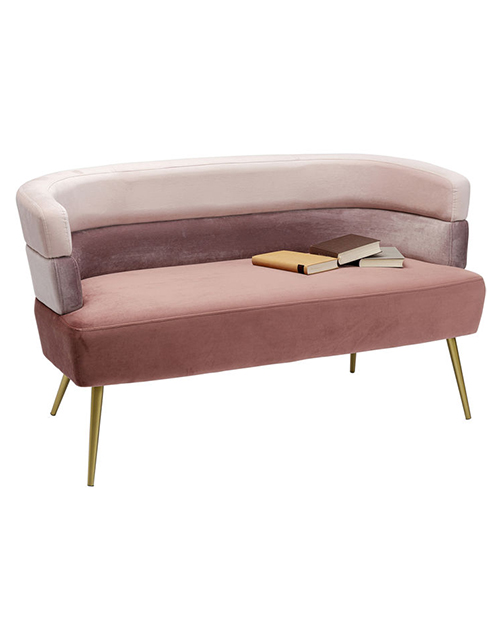
Material: Upholstery: 28 kg/m³ Polyurethane, Seat: Chipboard Natural/untreated, Cover: Polyester (velvet look), Foot/Base: Steel lacquered, Foot/Base: Delivery Knocked-down, 180 kg Max. load-carrying capacity, Hand-crafted, 43,50 cm Seat height, Maintenance and Cleaning: Art. No. 25002 Furniture Cleaner
Measures (H/W/D): 64 x 125 x 64 centimeters
Weight: 15.2 kg
read more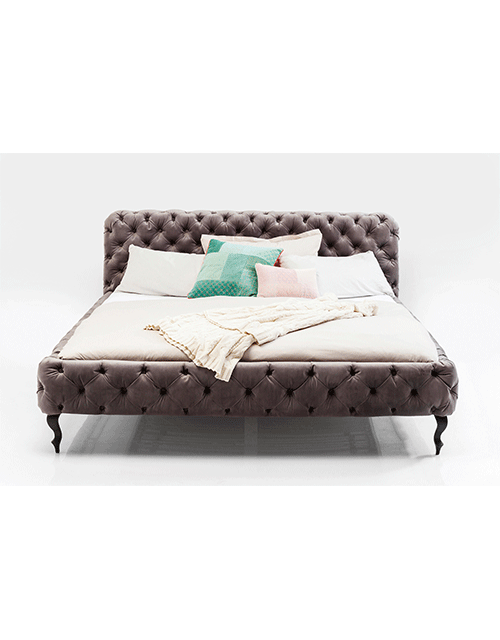
Material: rack: fir medium density fibreboard (MDF) natural/untreated, paper, foot/base: beech solid wood lacquered, cover: 100 % polyester, upholstering: 25 kg/m³ polyurethane, delivery knocked-down, abrasion test: 100000 Martindale, pilling test: 4, light fastness: 4, rub fastness: 4, Maintenance and Cleaning: Art. No. 25002 Furniture Cleaner
Measures (H/W/D): 100 x 197 x 228 centimeters
Weight: 53 kg
read more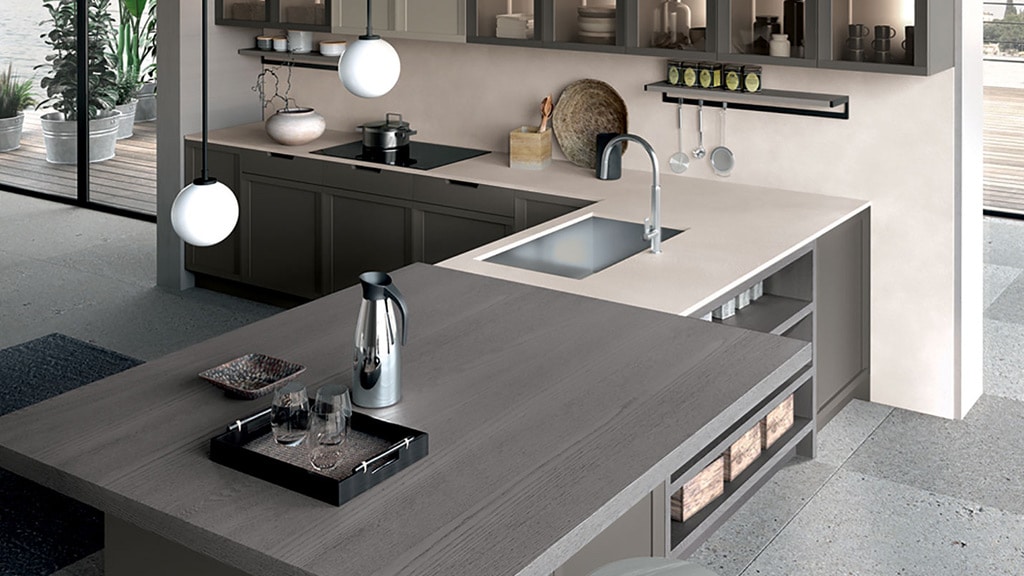
Whether it is marble, granite, laminate, quartz, steel or ceramic, there are some tips that are valid for all kitchen tops.
It is a good idea to use pot rests to avoid heat stains: hot pans, other cooking containers or coffee pots placed directly on the tops can damage them irreparably. Furthermore, excessive and concentrated weights can cause breakages and cracks in the material and it is advisable to never climb or sit on the tops. Also try to remember that pots and pans must not protrude from the hob, so as not to damage it with heat. Also avoid dragging objects on the hob that could scratch it and, in the case of using knives or sharp objects, always use a cutting board, to avoid permanent damage to the hob.
In our manual, we see how to best clean the kitchen top based on the material.

To clean the laminate kitchen top in the best possible way, it is necessary that there is no stagnation of water, so it is necessary to dry the top where it may have accidentally fallen and make sure that there is no water drips along the edges. For cleaning, always avoid abrasive materials such as steel wool or products containing abrasive creams or powder detergents and Acetone, Trielina, Ammonia. The risk of discolouration can also be caused by fruit juices and chemicals and health care products: remember to remove them immediately after use.
The Fenix® top has high-performance characteristics in terms of self-repair from not deep scratches. It does not need any particular maintenance but the surfaces must be cleaned regularly. Therefore, immediately remove liquids or residues of food and condiments: in particular, water with a high content of limestone, if it evaporates on the top, can create halos, which can be eliminated with daily cleaning. For routine maintenance, we recommend the use of a melamine foam sponge (also known as magic rubber): use the dry sponge by rubbing the affected part after drying the top. If the dirt remains, a damp microfibre cloth with hot water and detergents is recommended (in particular, a descaler such as Chanteclair is recommended). All household cleaners or disinfectants are also well tolerated. For extraordinary maintenance, in the presence of traces of dirt that cannot be removed with normal detergents, we recommend using non-aggressive aromatic solvents such as acetone. In the case of micro-scratches, it is necessary to follow the instructions for repairing the surface indicated in the specification sheets.
HPL surfaces have good resistance to household chemicals. For maintenance, it is good practice to always keep the hob clean and dry. In case of stubborn dirt or carelessness, first remove any deposits of dry material with a soft, damp cloth, without rubbing so as not to scratch the door. Then use a soft non-abrasive sponge and a household detergent (Chanteclair descaler again), wash the surface with the detergent and rinse with plenty of warm water, then dry well. To clean the HPL top you can also use acetone, being extremely careful not to let it come into contact with any plastic edges.
All hard surface cleaning products can be used on these floors. We advise you to carefully rinse the top in order to remove any soap residues. The use of basic degreasers should also be avoided. For limescale stains, we recommend the use of acid-based descaling detergents (such as Viakal). Normally dark and opaque products have a tendency to highlight the dirt more and therefore greater care is required to keep the surface clean; however, this does not affect the resistance and reliability characteristics of the top, which remain unchanged for all colours.
For proper maintenance of a marble or granite kitchen top, avoid citric acid (present for example in fruit in tomatoes and citrus fruits) which acts on the glossy surface, removing its original brilliance. Even cleaning products or food liquids such as oil, wine, vinegar, if not removed immediately after contact with the hob can damage it.
Dekton® is a precious material and is increasingly used in kitchen countertops. It is a mixture of glass, ceramic materials and quartz. This material is distinguished by its extremely compact surface without defects and is very resistant to pressure, scratches, shocks and high temperatures. It also has water-repellent properties and is immune to oil, vinegar and lemon stains, remaining unchanged over time. To clean a Dekton® top, we recommend the daily use of a neutral detergent, applying it with a soft cloth, then rinsing it with a damp microfibre sponge. In the colors that have a glossy finish, we advise you to finally dry the surface of the top with a paper or a cotton cloth. Finally, although very resistant, be careful in using chemicals such as bleach and acids.
Maxfine technical ceramics (Iris) are a material produced with noble clays such as quartz, feldspar and sintered kaolins, consisting of a compact, frost-proof, non-absorbent and resistant to chemical and physical attacks. This material is subject to minimal color variations. How is it cleaned?
For these types of tops, do not use alcohol or stain removers. Any liquid deposits must be dried immediately to avoid absorption alterations. Absolutely avoid the use of acetone, trichlorethylene, ammonia or detergents that contain it.
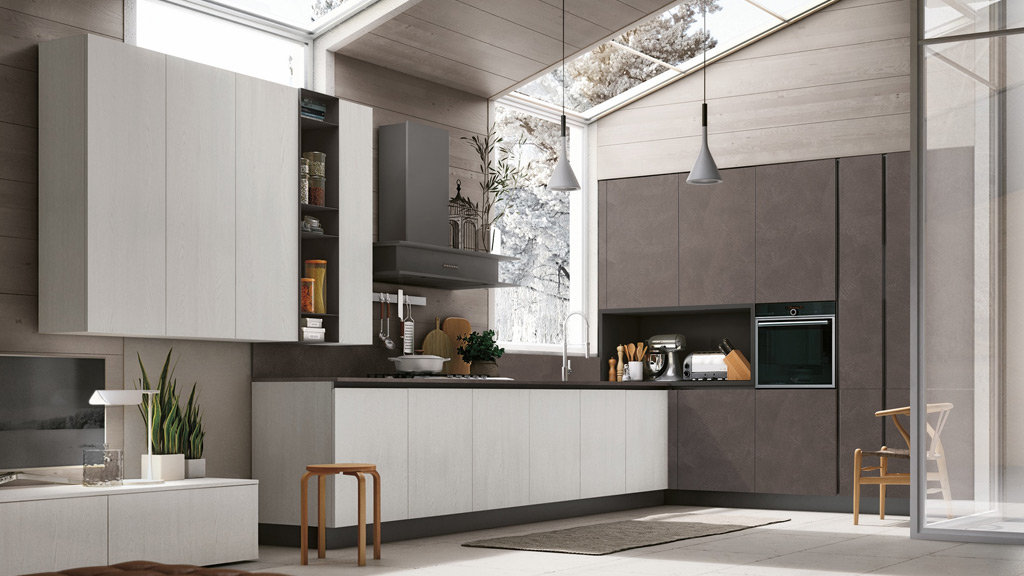
In fact, the kitchen, together with the bathroom, is the room in the house that tends to get dirty more because it is precisely here that every person, family or group tends to spend the most time.
For this reason the kitchen is the environment of the house that requires more attention and care for cleaning and its maintenance.
The time dedicated to a few simple operations will pay off over the years, safeguarding your kitchen and keeping it beautiful and functional over time.

In general, the load must be evenly distributed on the surfaces in the kitchen, especially when referring to wall units and / or suspended base units. Always remember that obviously the load must be compatible with the wall used and with the installation of the installer. However, we advise you not to load the wall units and shelves with excessive weights and to distribute the heavier objects inside the base units and cabinets.
Humidity and temperature out of the norm can deform some parts of wood or kitchen derivatives: humidity can infiltrate the micropores and cause swelling. To avoid this it is necessary to keep the environment ventilated and dry as much as possible, with a rather stable temperature between 10 ° C and 35 ° C.
In general, if there are no specific indications, always use a microfibre cloth and a neutral soap for cleaning, avoiding creating stagnation of liquids.
When using double-sided adhesive tape, remember to always carefully clean the surfaces before gluing with isopropyl alcohol (no denatured alcohol) and a clean cotton cloth without releasing threads.
During the life of the kitchen, always pay attention that the refrigerator doors close perfectly and that the gaskets of the refrigerator itself are not worn. If, for any reason, you notice that the gasket on the fridge door does not close properly, it is likely that water vapor has come out of the fridge which can consequently damage the furniture, causing the sides to sag and the doors to swell. However, consider that small warps in the sides of the furniture can occur during the life of the kitchen, movements that do not compromise the aesthetics of the product if they are kept within 1.5 mm / m.
If there are built-in ovens and refrigerators or hobs, the kitchen must be equipped with ventilation grilles positioned in the plinth. For this reason, always check that they have not been removed and that there are no obstructions that limit or exclude the correct flow of air passage. Similarly, check that the ventilation areas in the upper parts of the columns are not obstructed.
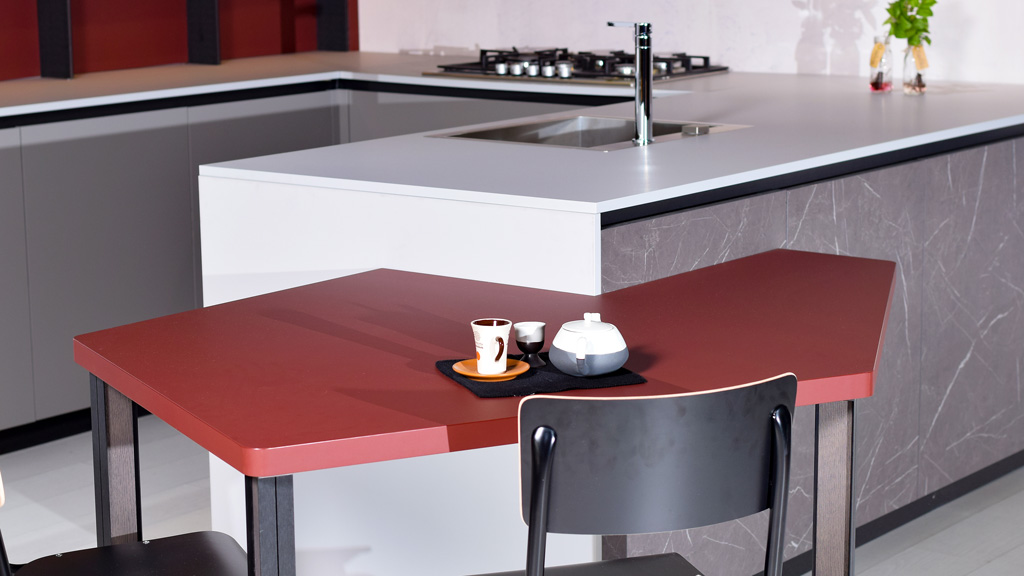
The dirt of the kitchen doors can become a real nightmare: in fact they are victims of the fumes and the work of the stoves, so they often find themselves full of stains.
In reality, making them clean again is easier than you might think and it only takes a few minutes and our suggestions for a correct cleaning and maintenance of kitchen doors in wood, laminate, stainless steel, hpl and for lacquered doors.
If you have wooden kitchen doors, remember that these must not have stagnant water: it is necessary to dry the doors where water may have accidentally fallen or the steam condensed on the surfaces. Use a cloth with the addition of neutral detergent for thorough cleaning. Absolutely avoid the use of Acetone, Trielina, Ammonia, Ethyl Alcohol.
Over time, the wood undergoes natural color variations: to delay this process, simply avoid exposing the kitchen to direct sunlight.
We also recommend that you turn on the extractor hood every time you cook: the wood is “alive” and there may be natural variations in size. In limit humidity conditions the variations can be even in the order of millimeters. Don’t worry about any slight growth and shrinkage as the seasons change: they are not defects, but the natural movements of a natural product. Sometimes they lead to the formation of cracks or evident movements of the elements: to avoid this it is necessary that the ambient humidity is not maintained for long periods below 40% or above 70% and the temperatures must be between 10 ° C and 35 ° C.
Do not use abrasive materials such as steel wool or products containing abrasive creams or powder detergents to clean laminate doors. For a perfect cleaning of the laminate doors, we recommend using a microfibre cloth and a specific detergent product. Absolutely avoid the use of Acetone, because it could damage the edges in plastic material, Trielina, Ammonia, Ethyl Alcohol.
To clean the lacquered kitchen doors, do not use abrasive materials such as steel wool or products containing abrasive creams or powder detergents. For a perfect cleaning of these doors it is necessary to use a microfibre cloth and a specific detergent product. Absolutely avoid the use of acetone and ammonia, as well as cloths containing ammonia.
In the case of glossy lacquered doors, you can use ethyl alcohol diluted with water, rinse with water and dry with a microfibre cloth.
The stainless steel surfaces have good resistance to household chemicals. For maintenance, it is good practice to always keep the surfaces for domestic use clean. In the event of stubborn dirt or neglect, any deposits of dry material must first be removed with a soft, damp cloth, without rubbing to avoid scratching the door. Then use a soft non-abrasive sponge and a household detergent, wash the surface and rinse with plenty of warm water, then dry well.
HPL surfaces also have good resistance to household chemicals. For the maintenance of HPL doors, it is first of all good to keep the surfaces clean and dry at all times. In case of stains or stubborn dirt, first use a soft, damp cloth without rubbing to avoid scratching the door. Afterwards it is recommended to use a soft non-abrasive sponge and a household detergent (perfect Chanteclair) to wash the surface and then rinse with plenty of warm water, then dry. You can, exceptionally, use acetone, being careful not to let it come into contact with any plastic edges.
How to clean the kitchen doors in the case of materials such as Fenix®, PVC, PET or the very delicate glass? Below we will provide you with some practical tips for the maintenance and cleaning of kitchen doors, so that they are always neat and beautiful as just installed.
Fenix® is a very resistant material often used for kitchen doors. For this reason it does not need any particular maintenance but cleaning must be carried out regularly. To keep the Fenix® doors clean and intact, immediately remove spills of liquids or food residues or condiments. In particular, if water with a high limescale content evaporates on the doors, it can create halos which can in any case be eliminated with routine maintenance.
To clean the Fenix® doors and in particular to remove dust, fingerprints, food and drinks such as sugary solutions, jam, milk, coffee, wine, oil, eggs, animal fats, use a soft cloth or a dry paper towel then hot water. up to 35-40 ° C with soap or mild household detergent. Let it act until the dirt starts to react, rinse with hot water and dry immediately with a soft cloth.
Products containing abrasive substances, abrasive sponges or steel blades should be avoided. Only in the case of persistent stains due to sauces, fats, eggs, you can use a dedicated solvent such as alcohol, acetone, then use hot water up to 35-40 ° C with soap or mild household detergent and leave to act. Follow the same routine of rinsing with hot water and then a wipe with a soft cloth to dry. If you are faced with limescale residues and persistent dirt, use a microfibre cloth moistened with hot water and a not too aggressive descaler, following these simple steps:
After drying, wipe the entire surface with the Fenix® sponge (called a magic sponge, supplied with the kitchen) if the customer has never cleaned the door before, it may be necessary to repeat the operation.
First of all, for the maintenance of your PVC and PET doors, protect them from direct exposure to the sun, because they are very sensitive to sunlight.
To best clean a PVC or PET door, start with a microfiber cloth and neutral soap, absolutely avoid abrasive materials and products, such as acetone, trichlorethylene, ammonia and ethyl alcohol.
To clean the glass doors, we recommend using a soft sponge or a rubber squeegee with plenty of water and a suitable glass cleaner. Remember not to exert excessive pressure on the glass as this could result in scratches or stains on its surface. Continue cleaning the glass until the cleaning product has been completely removed. If stains form, repeat the operation, rinse and dry with the squeegee.
Keep in mind some precautions such as: do not try to remove residues when the glass is dry, when removing grease or grease streaks (for example fingerprints), cleaning products should always be applied to the entire surface of the glass.
On the other hand, the products to be absolutely avoided when cleaning glass doors are those that contain derivatives of hydrofluoric acid, fluorine, chlorine or ammonia. These bandits because they could damage the decorative coating and / or the glass surface. The same applies to highly acidic or highly alkaline products that are prohibited because they corrode the glass surface.
If normal cleaning is not enough, use a more thorough cleaning to clean the side of the decorative glass.
In this case, to remove stains from oil and other organic compounds you can use solvents such as isopropanol or acetone to be applied with a soft cloth that does not leave residues, making sure that these products do not come into contact with the ” possible painted or silvered rear face of the decorative glass. In this case, it is recommended to rub gently, rinse thoroughly and then follow the standard cleaning program as explained above.
Source: stosacucine
We are looking for an experienced and result-driven Digital Marketing Executive to join our awesome marketing team! As a Digital Marketing Executive at our company, you will be responsible for setting up, implementing and managing the overall company’s digital marketing strategy.
Digital marketing strategies are extremely important for our company’s success, so your role will play a crucial role in achieving our business goals and objectives.
We are expecting you to have experience and a big passion for digital technologies and all digital marketing channels.
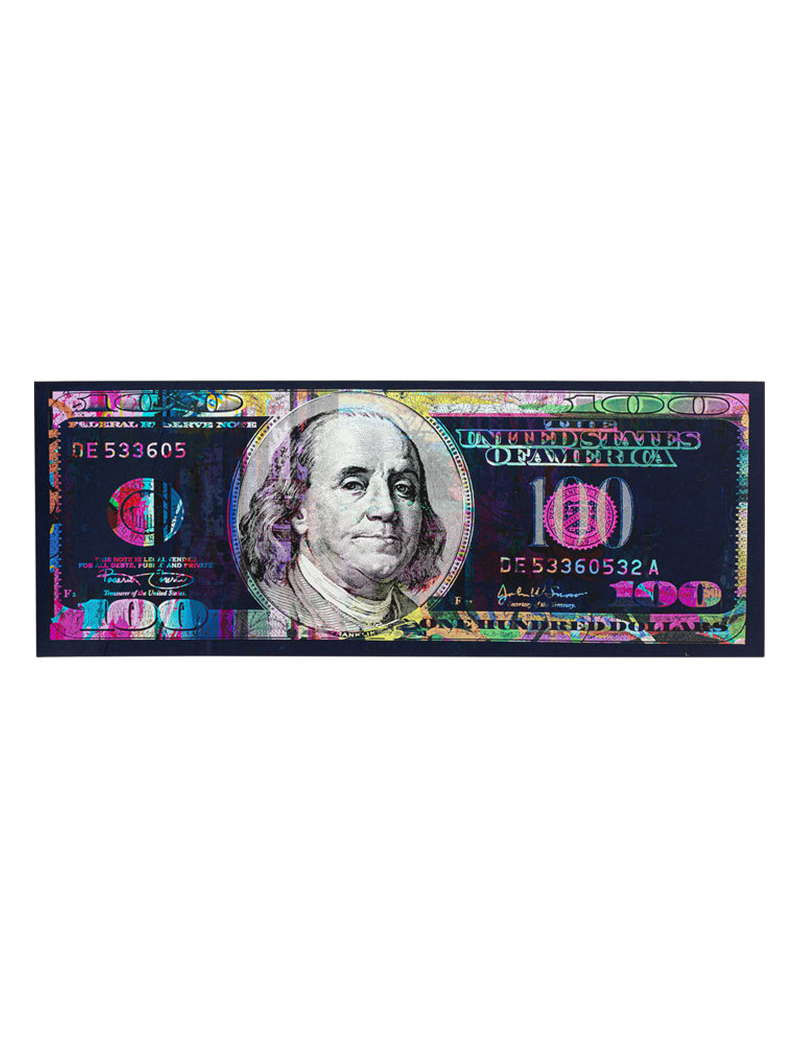
A frameless glass picture with an artistically transformed dollar note – everyone will give it a second glance. A highlight on either white or coloured walls which is sure to stimulate conversation and admiring glances.
A dollar sign for the wall – colourful glass picture in XL landscape format in the Pop Art style
Effective wall decoration with metallic effects, for example as a break with classic interiors
A safe bet when it comes to an individual picture wall
In the home office it will motivate you to finally work out that savings plan
An original gift for all those who only want money for their birthday or Christmas
Material: Picture: Polypropylene, Front: Glass Toughened safety glass Laminated
Measures (H/W/D): 80 x 200 x 4 centimeters
Weight: 15 kg
read more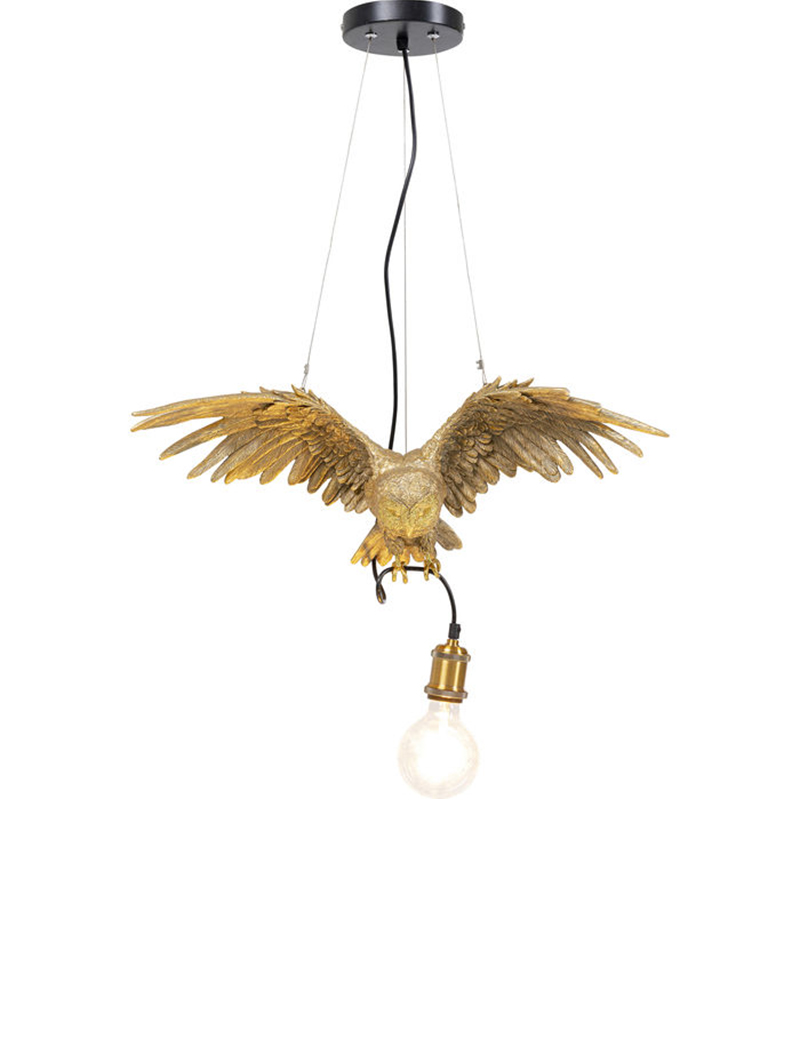
Hanging lamps are the perfect solution for illuminating rooms with indirect light. With its unique, creative design, this golden pendant lamp creates an island of light with an individual character throughout the home. 230 V, 50/60 Hz, bulb fitting E27, number of illuminant 1, max. 40 watt, without illuminant
An absolute highlight for the whole apartment has just landed: a gold-coloured pendant lamp with an owl
An eccentric and detailed hand-made lighting object, which reveals its owner as an individualist
The owl lamp looks extra stylish with bulb in the vintage style featuring a filament, bulbs available in the shop
Suspended over the home bar for night owls, or over the kitchen counter as mood lighting for a nightcap
Flies straight to its place: this dining table lamp from the natural world is delivered fully assembled – simply connect it up, job done!
Material: Shade: Polyresin, Canopy: Steel lacquered, 180 cm Lenght of wire, 14 x 14 x 2,80 cm Canopy, Hand-crafted, Adjustable in height, Wire Textile-covered Black, Delivery Assembled
Measures (H/W/D): 28 x 57 x 14 centimeters
Weight: 3 kg
read more